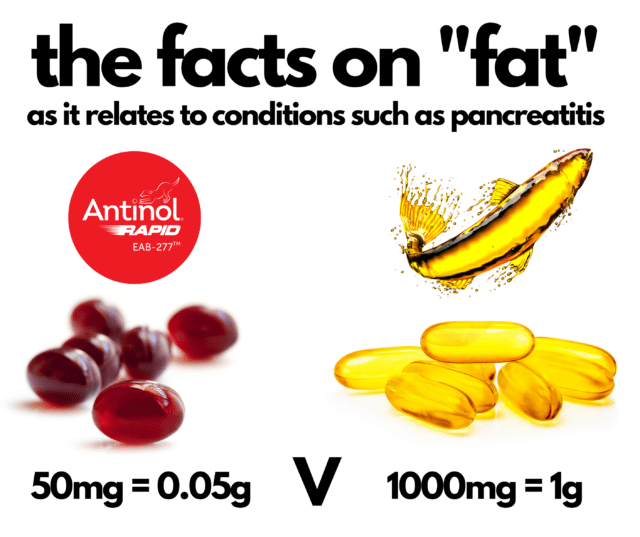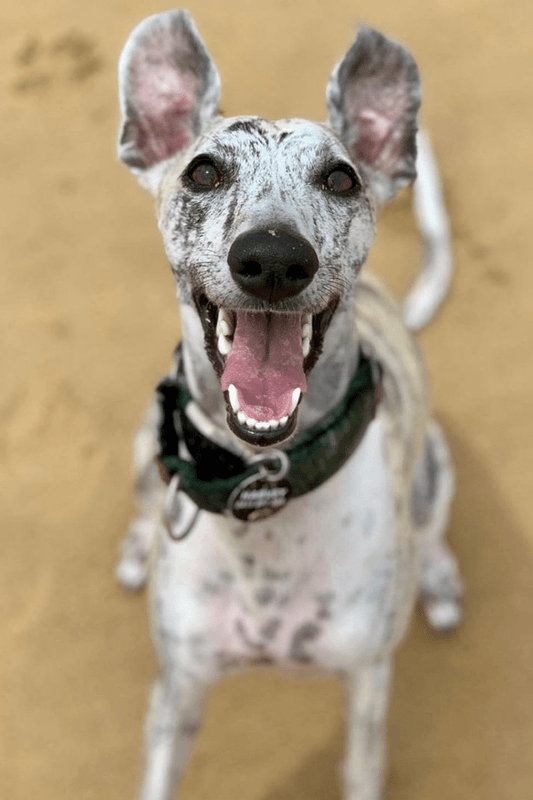Fats (Omegas for Dogs). Something not to fear.
Especially when it comes to the essential fatty acids and prized omega 3’s.
Fats plays an important role in the nutrition of dogs. However, not all fat is the same. While some fats solely act as a source of energy, other fats are closely associated with the health of our canine companions.
The term “fatty” is significantly different when referring to essential fatty acids – especially lipids. All nutritional fats are composed of fatty acids.
Dogs require these fats in their diet. However, fats are among the most chemically fragile nutrients in dog food; they are the limiting factor to the shelf life of most dog foods. Fats that have degraded and oxidised can cause all sorts of health problems for dogs.
Dietary fats not only provide concentrated forms of energy they do so much more.
They carry the fat-soluble vitamins and supply the dog with essential fatty acids (fatty acids are the basic building blocks of fats; “essential” fatty acids are those that the dog’s body needs but can’t manufacture).
A variety of good fats are needed by the dog for healthy skin, hair, and immune function; regulation of the inflammation process; and prenatal development. On a molecular level, fatty acids contribute to the physical structure of all the dog’s cells.
Antinol Rapid fits into the category of a functional fat containing over 30 essential fatty acids including the full spectrum of prized omegas in one tiny capsule. The prized lipids within would be practically impossible to feed via diet alone.
Healthy cell membranes are critical to shaping great health.
Unhealthy membranes can make the cells less efficient, affecting your dog’s organs and entire body. Research shows that feeding enough good fats, in the right balance, can develop better brains and better behaviour.
Puppies learn faster, are shaped easier and recall training more, and older dogs stay mentally sharp with less cognitive decline.
Properly balanced fats also support better eye and heart health and develop more muscle and less fat in the body. This leads to better athletic performance and more active life.

The facts on Omega Fats and dogs who need to medically follow a low-fat protocol (i.e. for pancreatitis)
We want to dispel the myth that omega supplements and specifically antinol could cause pancreatitis.
In many cases the definitive cause of pancreatitis is unknown.
Risk factors are extensive and include endocrine disease, obesity, breed and things like dietary indiscretion and consumption of human scraps/processed fats.
There are no known reports of omega-3 fatty acids causing pancreatitis in dogs, cats or humans.
🔎omega-3 fatty acids may reduce pancreatic inflammation and prevent apoptosis (a type of cell death) of acinar cells*
(The pancreatic acinar cell is the functional unit of the exocrine pancreas. It synthesises, stores, and secretes digestive enzymes)
🔎Omega-3 lipids can also decrease the inflammatory response, improve the immune function and restore bowel function in severe acute pancreatitis**
🔎The addition of omega-3 fatty acids to the diet can also help to lower triglyceride concentrations – high serum triglycerides are often associated with pancreatitis attacks.
Antinol is now being used by veterinary internal medicine specialists with regards to wanting to supplement dogs with the prized marine omega’s but needing to be mindful of fat content and types of fat within a diet.
Let’s look at why?

Risk of Oxidation
👉Given the pathophysiology of pancreatitis it’s known oxidised lipids may activate inflammatory cells.
Omega 3 lipids are incredibly fragile.
💪Antinol is stabilised and will not oxidise or become rancid which is often linked with fish oil production and powdered omega products.
Milligrams V Grams
💪Antinol has a concentrated efficacy outcome with a low dose of total fat (lipid).
🔎Take a dog such as a miniature schnauzer for instance with a requirement for a very low-fat diet due to being extremely sensitive to fat. If they are on a prescription ultra-low-fat diet the fat intake by adding one capsule of Antinol would go from around 5 grams of fat in a day to 5.050 in a day – a tiny addition of around 1%.
🧐This is much different to the addition of fish oil and other marine omega products when you largely are talking about adding in grams, not mg of fat.
👉The addition of therapeutic recommendations of omega 3 for a 20kg dog (310mg x mg/kg^.75) would be almost 3 grams of fish oil bumping up fat intake by 20% and in some cases that may not be tolerated if they have pancreatitis.

*Danino H, Ben-Dror K, Birk R. Exocrine pancreas ER stress is differentially induced by different fatty acids. Exp Cell Res 2015; 339:397-406. *Park KS, Lim JW, Kim H. Inhibitory mechanism of omega-3 fatty acids in pancreatic inflammation and apoptosis. Ann NY Acad Sci 2009; 1171:421-427. *Lei QC, Wang XY, Xia XF, et al. The role of omega-3 fatty acids in acute pancreatitis: A meta-analysis of randomized controlled trials. Nutrients 2015; 7:2261-2273. ** Jörg M. Steiner1, Dr MedVet, PhD, DACVIM, DECVIM-CA, AGAF; Marge Chandler2, DVM, MS, MANZCVSc, DACVN, DDACVIM, DDECVIM-CA, MRCVS – WSAVA 2014










